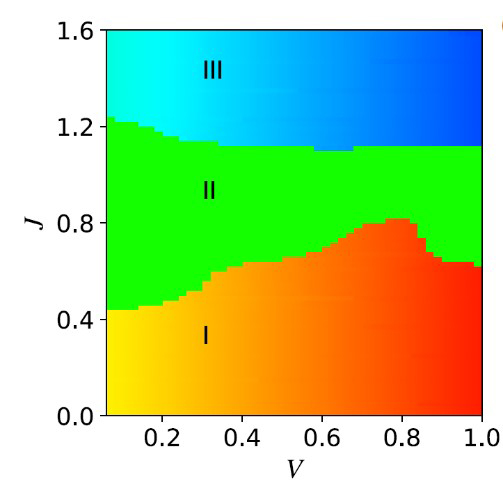Led by Prof. QIAO Zhenhua from International Center for Quantum Design of Functional Materials (ICQD) of University of Science and Technology of China (USTC), and international collaborators, the research groups found a new system of interaction-induced orbital insulators. The result was published on Physical Review Letters.
Since the symmetry breaking and topology induced by the interaction provide the basis for the classification of condensed substance, an increasing number of researches have been conducted to deepened the understanding.
The kagome, a combination of a linear dispersion relationship similar to graphene and a quadratic tangent energy band and flat band, is regarded as an ideal platform for studying the relationship. However, in terms of a half-filled metal with a flat band with spin, the interaction, magnetism, and the relationship with the topology deserves further investigation.
The group studied the quantum phase of the kagome lattice in the flat band half-filled using the density matrix renormalization group (DMRG) method and the calculation of the mean field topological energy band, which pointed out that the system has an orbital insulator phase.
The study is based on the lattice tJV model, where t denotes the nearest neighbor transition, J the nearest antiferromagnetic exchange and V the the Coulomb repulsion between the nearest and next nearest neighbors.
It found that, under the condition of limited V, the size of J plays a vital role in the phase diagram of the system.
To be specific, the larger antiferromagnetic interaction tends to form a nematic charge density wave with anisotropy but no magnetism (as shown in region III in the figure). As J decreases, the system first enters a partially magnetized phase (as shown in region II); when J further decreases, the system enters a fully polarized ferromagnetic phase and has a quantized anomalous Hall conductance (as shown in region I), and the corresponding topological number, or Chern number of the system is ± 1.

Phase diagram vs repulsion-interaction strength V and exchange-interaction strength J. Phases I, II, and III are fully spin polarized spontaneous Chern insulator phase, partially polarized intermediate phase, and nonpolarized phase with spin and charge nematicity, respectively. (Image by REN Yafei et al.)
The Chern number of this system only depends on the orbital magnetization of the system, so it can be positioned as an orbital Chern insulator. Rather than being induced by magnetism and spin-orbit coupling, the Chern insulator in this study is induced by the electron-electron interaction.
This study not only showed the existence of another orbital insulator system other than the corner multilayer graphene, but also provided a theoretical basis for distinguishing the different physical mechanisms of the abnormal Hall Effect in the kagome system.
Paper link: https://doi/10.1103/PhysRevLett.126.117602
